The Stories of 5 Common Amish Family Names (Part 3)
We’ve got five more histories of common Amish surnames today. If you missed previous editions, here’s Part 1 (Beachy, Swartzentruber, Lapp, Hostetler, Stoltzfus) and Part 2 (Zook, Gingerich, Troyer, King, Lehman).
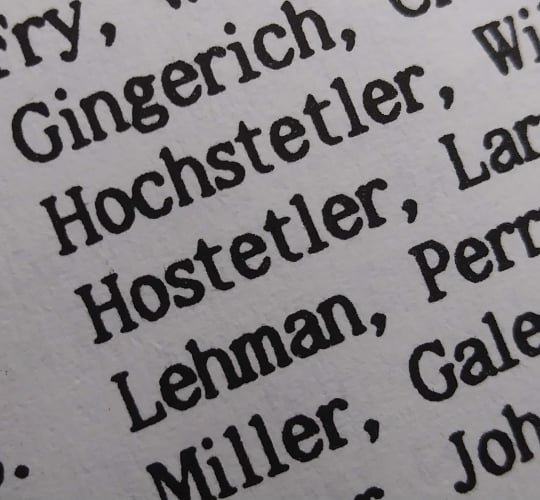 The following histories are from the Family Life series “Amish and Mennonite Family Names” by Joseph Stoll, which ran from December 1968 to March 1969. I’ve added my own comments in some places in italics.
The following histories are from the Family Life series “Amish and Mennonite Family Names” by Joseph Stoll, which ran from December 1968 to March 1969. I’ve added my own comments in some places in italics.
Thanks for your suggestions so far on Amish names to cover. I’ll keep taking those into account for any future editions of this series.
Five Common Amish Family Names (Part 3)
1. Yoder – An old, Swiss family of the canton of Bern. According to recent research, the Yoders were a Bernese clan found at the edge of the Oberland as early as the 1100s.
The name Yoder is evidently derived from the Christian name “Theodore”. Saint Theodore, a missionary in the Swiss Alps in the Middle Ages, has become known as St. Yoder. The Swiss almanac still lists St. Joder’s Day (August 16). It is believed possible that a family who admired and worshipped St. Joder, adopted his name as their family name.
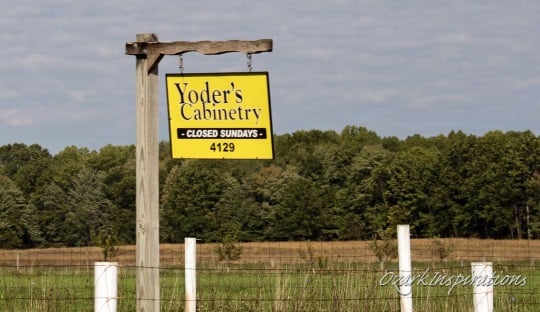
Andover, Ohio. Image: Don Burke
In 1531 one Heini Joder was imprisoned at Basel as one of those defiantly spreading Anabaptist doctrine. The Bern records show that other Joders became Anabaptists in the 17th century.
A number of Yoders migrated to America, which accounts for the large number of Amish and Mennonites by that name. The name is second only to Miller.
So are there more Amish Yoders than Stoltzfuses? That’s the only other Amish name that I might think could vie for the #2 spot after Miller. But if including Mennonites with each surname as Stoll appears to do here, that might put Yoder ahead.
2. Schrock (Shrock) – The bearers of this common Amish name are the descendants of a number of immigrants. In Switzerland the name was spelled Schrag or Schraag.
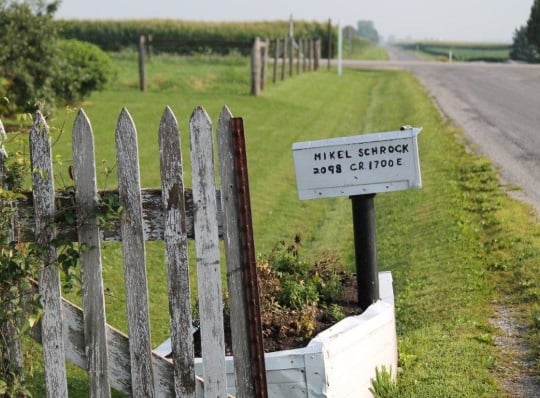
Arthur, Illinois
Casper Schrag (born about 1745) came from Switzerland and settled in Somerset County, Penna. His son, Peter Schrock, was a well-known Amish minister of Wayne County, Ohio. He died while preaching a sermon in a barn in 1846.
3. Fisher – One of the ancestors of this numerous family was Christopher Fischer who came from Rotterdam, Holland to America in 1750. He lived a while at Germantown, Pennsylvania and then joined the pioneer Amish Mennonite colony in the Oley Valley of Berks County, PA. Still later he moved again to Chester County, PA, near Malvern.
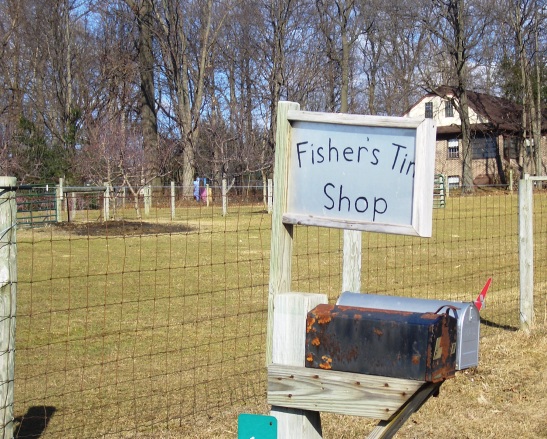
Lancaster County, Pennsylvania.
Later generations found their way to Lancaster County, where most of the Amish Fishers are found today.
Fishers would also be found in other Lancaster-connected communities, such as in Christian County, KY, Charlotte County, VA, or Parke County, IN.
4. Stutzman – As early as 1711 Christian Stutzman and family left the shelter of Holland (to where they had fled from Switzerland), and sailed for America. Some years later, in 1727, John Jacob Stutzman landed in Philadelphia, and from him most of today’s Amish Stutzmans are descended. The grandson of John Jacob, Christian by name, married Barbara Hochstetler, the daughter of Jacob Hochstetler of the Indian Massacre.
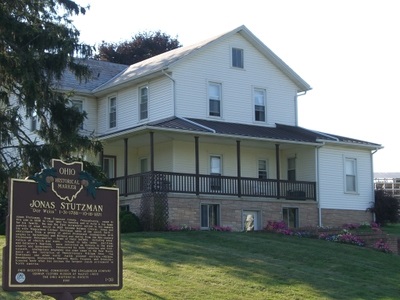
Holmes County, Ohio
The descendants of this couple, Christian Stutzman and Barbara Hochstetler, are listed in one of the biggest family genealogies on the market today. The book contains over 15,000 entries and was compiled in 1912 by Harvey Hochstetler.
The historical plaque in the photo above commemorates the Jonas Stutzman homestead. This unusual man, with the nickname “White” or “Der Weiss”, was the first Amish settler in what would become the Holmes County community.
5. Wagler – The Waglers came from Lorraine, France to Canada in the 1840s. In Europe they lived in the area near Colmar and Mulheim. John S. Wagler came to Waterloo County, Ontario in 1845 as a young unmarried man of 25. Three years later his father, Bishop Christian Wagler, and two of his brothers also came to Canada.
The above John S. Wagler was ordained a deacon in 1852, and in 1871 he moved with his family to Daviess County, Indiana to the new settlement there. The reason for moving was to seek a warmer climate; John was a small frail man who did not like the Canadian winters. The Waglers in the U.S.A. (and now some in Canada, also) are descendants of this John and his wife Magdalena Christner (born in Germany in 1831.

In Waterloo County, Ontario, the Waglers have played an important role in the church. John’s brother, Minister Christian Wagler (1810-87) was the father of Jacob Wagler (1839-1901), a widely-known bishop who also practiced medicine, and of Christian Wagler (1838-1910) a deacon.
Among the Amish of Daviess County, Indiana, Wagler might be the most common surname today. But it is rarely seen elsewhere – with some exceptions including the Ontario communities at Milverton and Aylmer.




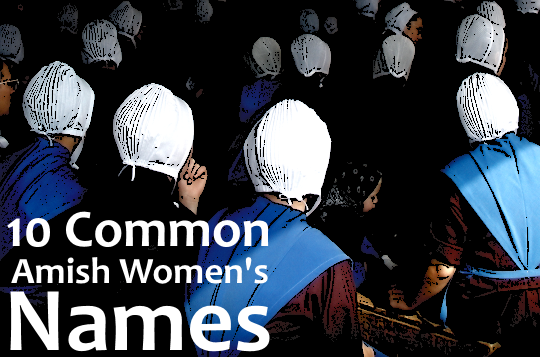


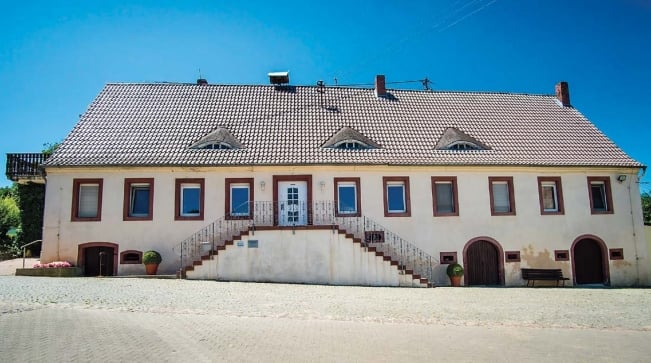
Wagler
In the small town I live in lower Alsace and where several Amish families lived, the wife of Jacob Wagler born Catherine Reber had remarried with Nicolas Maurer who was the tenant of a farm lost in the mountains. This was the case for many Anabaptist families. Jacob Wagler was born before 1668 and lived in Colroy-la-Grande (Vosges) and died on an unknown date. We find this patronymic throughout Alsace and Lorraine. We already find passengers by the name of Wagler on the boat named “France” which left Le Havre and which landed on July 12, 1833 in New York. So there were already Waglers arriving in America before the date you indicate Erik.
The Wagler family was originally known as Berce. It is a French / German transcription which went from French “rocking” to “wagle” in Germanic dialect.
Interesting, Romain, and how neat that you are from a town where Waglers lived. It’s a small world. Would you happen to know the religious background of the Waglers which came in 1833?
Hello Erik,
The vast majority of Anabaptist families in Alsace were Amish. I had sent you a message to give you a little overview on the subject about 2 or 3 weeks ago, but I think that my email did not reach you. Maybe a wrong address?
I would have something to say about the Amish in Alsace if ever.
To return to this Berse / Wagler family who landed in 1833, I looked into my archives. Here is what I found.
The first Berse found of this line in Alsace was called Abraham. He was born in Aubure uper Alsace around 1720 and died on December 28, 1795 in La-Croix-aux-Mines. He married Catherine Kupferschmidt. They had 8 children including Isaac. Isaac was born around 1760 and died in 1826. He married Anna Krahhenbühl first and had 1 son. Following the death of Anna, Isaac remarried with Elisabeth Marchal in 1799. They had 5 children including Jacob born on November 30, 1803 in a hamlet of La-Croix-aux-Mines. Jacob married his cousin Catherine Ulrich who was born in Hirsingue (Uper Alsace) Jacob and Catherine followed in 1833 a brother and a sister of Catherine who had already embarked for America in 1831. For embarkation Jacob changed his name to Christian because he was a deserter to escape compulsory military service. In 1840 we find the couple in Ross Butler County Ohio and in 1844 in Tazewell County Illinois. They had 6 children. Jacob / Christian died in Pekin Illinois on December 22, 1877 and Catherine on May 21, 1887 also in Pekin.
This is what I can say about this family.
Interesting insight Roman
My family name is from Alsace Lorraine, and was wondering if you had any insight on it. As it is a French German mash, from what I understand, but have never found anyone from there that could help me decipher what my family did, that gave them their name. Schalleur, is the name, I have been told the S and the Eur are french and chalk is the German root,. But they never knew what that was.
Tia
Hello Tia,
Indeed, the (eur) is a French addition and the (sch) is rather Germanic. Schallers are found in Alsace, Switzerland and Germany.
In Alsace we have a history and a Germanic culture whereas on the Lorraine side in large part, they have a spoken and a French culture.
To my knowledge, the name Schaller comes from “schall” in old German which means noisy to see of the one who rings.
I hope to have enlightened you a little more on the subject.
Romain
There are some Waglers in an amish comunity near Degraph Ohio
Russian Amish?
I am from Amish and old (MC) Mennonite background, all of Swiss origin in Indiana and Pennsylvania. I married into a Russian Mennonite family in Kansas. Fascinating to me was the discovery that a few Amish families moved to Russia (now Ukraine) when most moved to the United States. The majority of Russian Mennonite families were of Dutch origin, but a small group of Swiss families, some from the Amish side of things, joined them, including at least one Schrag and Miller family.
After moving from Switzerland to southern Germany, most Mennonite and Amish families moved to Pennsylvania beginning in the early 1700s. A handful of families chose to go east, ending up in Volhynia (western Russia). These Swiss Volhynians had names like Krehbiel, Miller, Schrag, Zerger, Gering, Graber, Kaufman, Stucky, Lichti, and Roth. Eventually they moved primarily to Kansas and South Dakota in 1874.
https://gameo.org/index.php?title=Volhynia_(Ukraine)